Last Updated on January 10, 2024 by Marian Jones
The topic of food in Munich is a wide one. We start with Kaffee und Kuchen, the coffee and cake combo so popular all over Germany. Then we visit the city’s best-known food markets where you can buy local produce and try out local specialities at food stalls before popping into two well-known delicatessens. There’s a rundown of some of the area’s most iconic dishes and finally a visit to the wonderfully-named Kartoffelmuseum, a museum dedicated to that Bavarian staple, the potato. Yes, really. Of course, Munich is a cosmopolitan city, with many foreign restaurants, but the emphasis here is on traditional Bavarian cuisine.
Introduction to bavarian food
The author Robert Graves had German grandparents and very fond memories of the food he ate as a child visiting Bavaria in the early 1900s: ‘We liked the rye bread, the dark pine honey, the huge ice-cream puddings made with fresh raspberry juice …. my grandfather’s venison, the honey cakes, the pastries and particularly the sauces made with different kinds of mushrooms.’
kaffee und kuchen


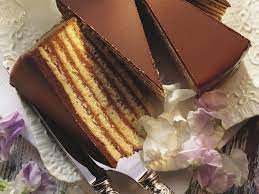
You can enjoy coffee and cake all over the city, but a particularly classy option is the Café Luitpold, a Munich institution where writers and artists used to gather at the turn of the last century. It’s still very stylish and the choice of ‘Kuchen’ includes speciality layer cakes such as Herrentorte, with its 6 layers of marzipan, cream, cognac and chocolate and Prinzregententorte which has 7 layers of sponge, chocolate and chocolate cream and is named after the popular Prinz Regent, Luitpold, who reigned from 1886-1912. Other cakes on offer include apple cake and Apfelstrudel. There is a full menu of meals and a well-stocked counter of luxury chocolates which would make a lovely souvenir.
The Café Frischhut in the Viktualienmarkt is another classic café, founded over 100 years ago and known for such classics as Schmalznudeln (deep fried yeast dough), Stritzeln (long plaited buns) and Rohrnudeln (yeast cakes filled with plums or raisins). Other cake varieties to look out for include Schwarzwälder Kirschtorte (Black Forest Gateau), Dampfnudeln (steamed doughnuts) and Lebkuchen, the spicy ginger cakes so popular at Christmas.
markets and delicatessens
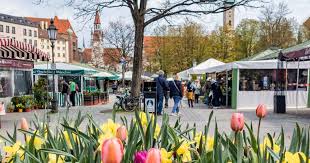
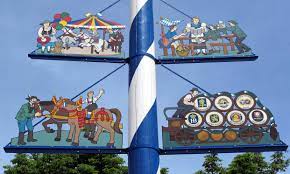
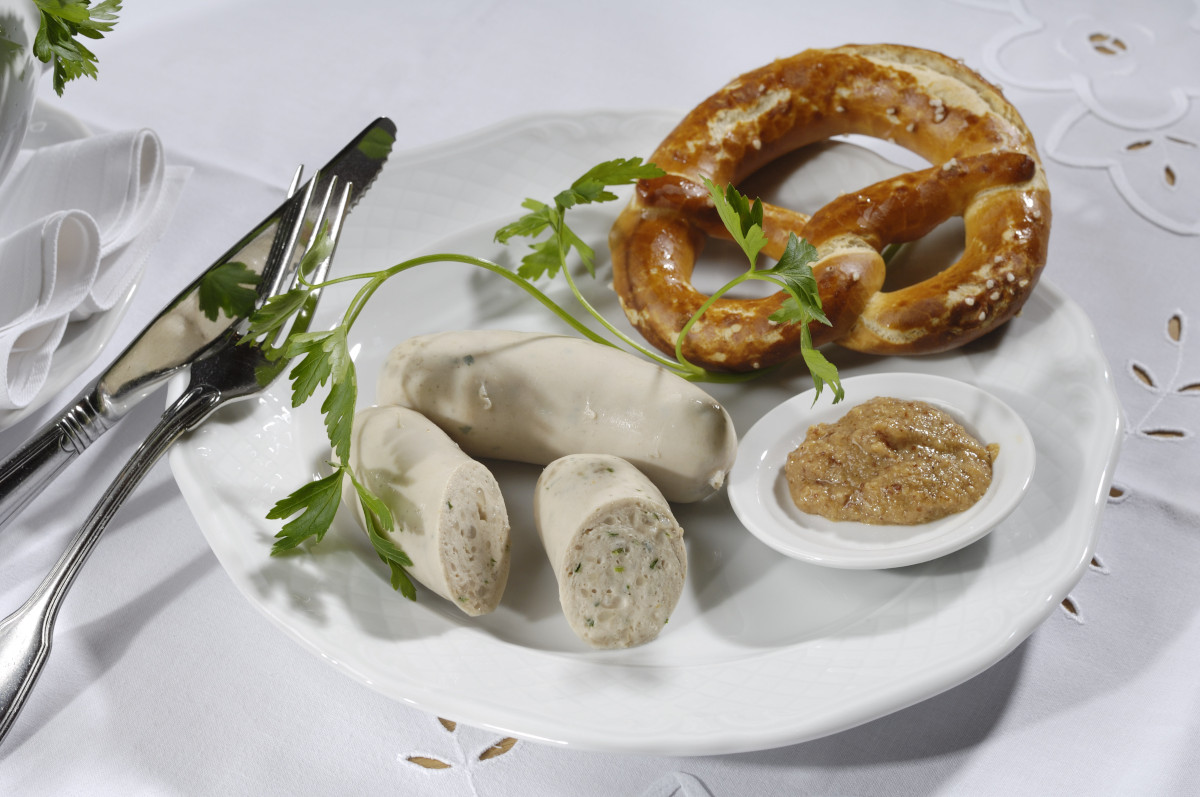
A visit to the Viktualienmarkt is a must. It’s very central and just the place to buy produce if you are self-catering, or to stop at one of the many little eateries to try such specialities as Leberkäse (meat loaf) or Weisswurst, a pair of veal sausages flavoured with parsley, onions and maybe a little lemon juice. It’s served in a bowl of hot water with a pretzel and some sweet, grainy mustard and usually eaten with a beer. Weisswurst is traditionally served only before midday, a habit dating back to pre-refrigeration days. As the Bavarians put it, ‘the sausage should not hear the clocks strike noon’.
The Viktualienmarkt is worth a look round. There’s a maypole there – as there is in many Bavarian villages – and stories about it are told on the podcast. Look out too for the Metzgerzeile, a tiny side street with a number of butchers’ shops where the Butcher’s Guild first established its business in 1365. Sometimes there are special celebrations, perhaps to mark the arrival of the new season’s asparagus, or on Shrove Tuesday when the old custom of dancing market women is revived. It’s a lively area and easy to pop into while visiting the city centre sights. Alternatively, try the Elisabethmarkt in the Schwabing area., which is less touristy, but popular with locals.
2 well-established delicatessens worth finding are Käfer, at 73, Prinzregentenstrasse and the 300 year-old Dallmayr at 14-15 Dienerstrasse, which once supplied Royal Bavarian Court.
bavarian specialities
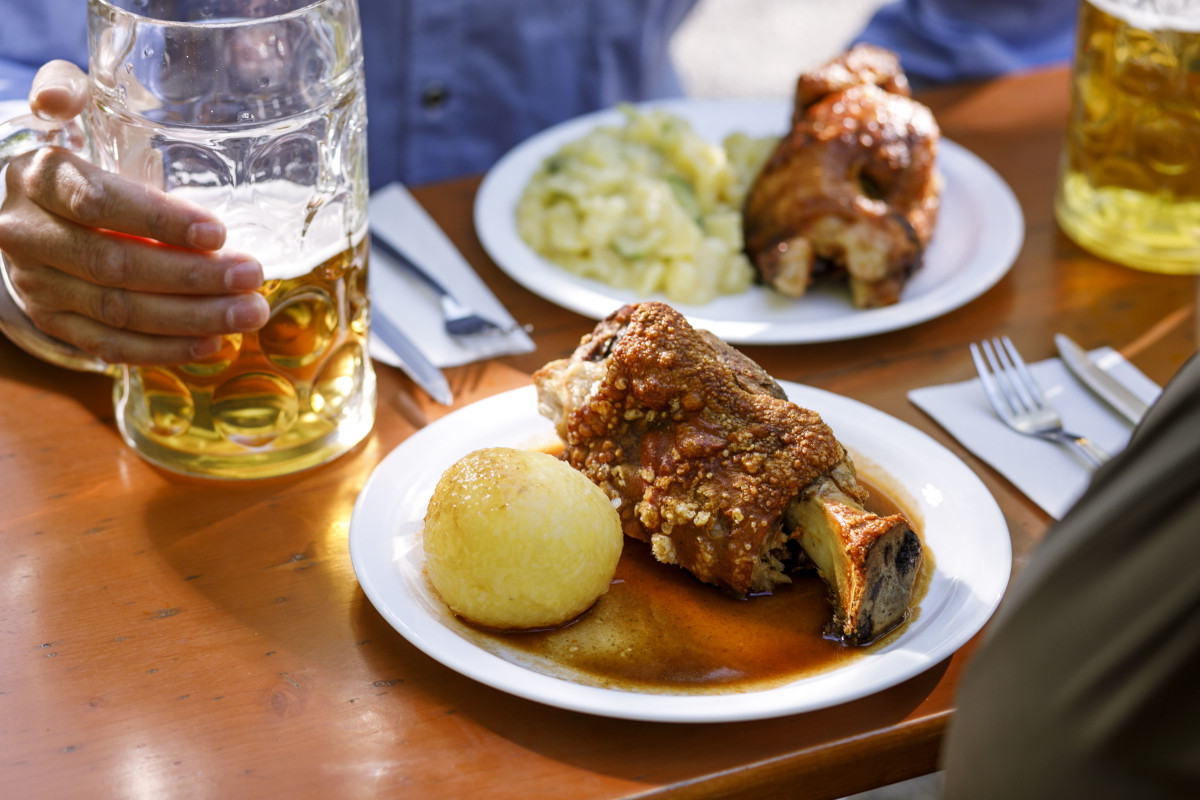
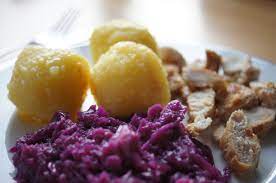
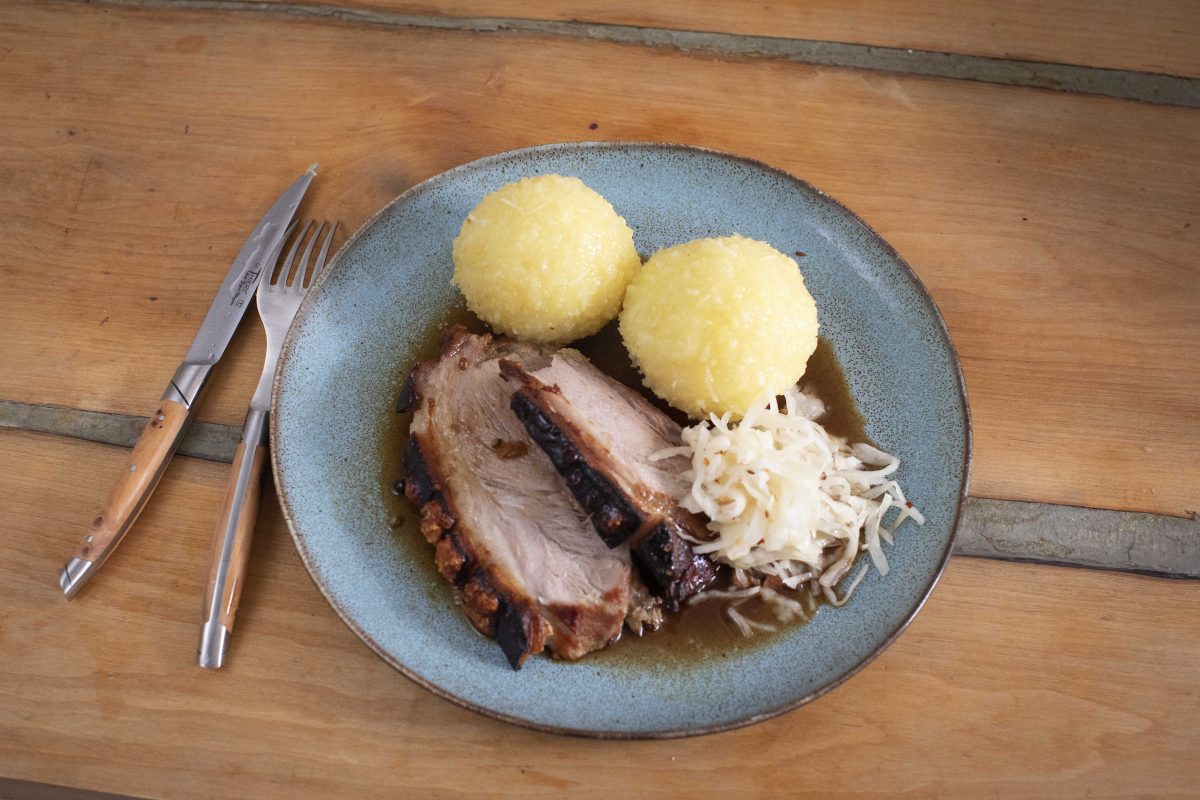
Bavarian food is hearty and warming, as befits the chilly winters. It’s heavy on pork, including such staples as Schweinehaxe (roast pork knuckle) and Schweinsbraten (sliced braised pork in beer gravy), but also colourfully named dishes like Rippchen (ribs), Züngerl (tongue) and Wammerl (pork belly). Potatoes are served often and in many forms, including Salzkartoffeln (boiled), Bratkartoffeln (fried) and Kartoffelpüree (mashed) as well as dumplings – Kartoffelknödel – and potato salad, Kartoffelsalat. Dumplings of other types are popular too and so is Leberknödelsuppe, ie liver-dumpling soup where a large meaty dumpling is served in a thin, flavoursome broth. Locally grown vegetables include asparagus, cabbage – both sauerkraut and red cabbage – and various mushrooms, including Pfifferlinge (chanterelle) and Steinpilze (ceps)
the potato museum
Munich’s Kartoffelmuseum is said to be one of only three potato museums in the world. It’s quite comprehensive and sections include those telling the history of the potato since its introduction to Germany by Frederick the Great in the 18th century and others explaining its role in Schnaps production and its many non-culinary uses, in soap and as Christmas decorations, for example. Who knew? There’s a display outlining the potato’s different roles in rich and poor people’s diets and even a display of potato-inspired artwork.
Listen to the POdcast
Links for this post
Café Luitpold
Viktualienmarkt
Käfer Delicatessen
Dallmayr Delicatessen
The Potato Museum
Previous episode Football and the Munich Olympics
Next episode Munich, World Capital of Beer





